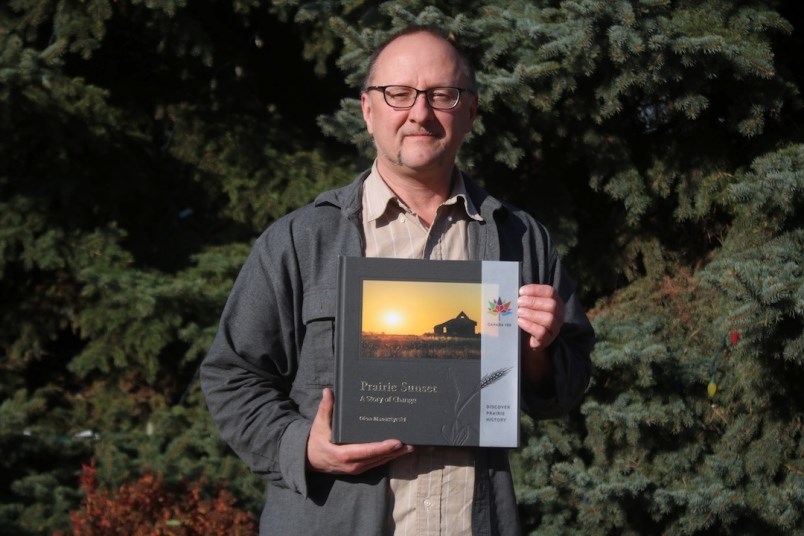Dion Manastyrski is intimately familiar with the highways and backroads of the prairies. He’s spent over a decade driving through Alberta, Saskatchewan, and Manitoba, exploring the forgotten and hidden corners of the provinces. He’s spent most of his time searching for abandoned and neglected farms.
When Manastyrski discovers a farm property, he checks for any “No trespassing” signs. If it’s all clear, he marches to the building armed with his camera and related gear. He’ll poke his head inside, looking around for hazards.
“I don’t recommend people go to these places,” he said. “You can never tell if a floor is going to give in.”
If the property is safe, Manastyrski will comb through it, searching for unique objects. He’ll snap several photos, capturing eye-catching angles and frames. Depending on the building, he’ll stay for a few minutes or a few hours.
“I contemplate the place,” he said.
Manastyrski leaves the building untouched, taking pains not to disrupt anything.
“I try not to alter the places,” he said. “I take only photographs and nothing else.”
Manastyrski’s decade-plus of farm photograph has led to something concrete. Last year, he published a second printing of “Prairie Sunset: A Story of Change.” The photography book is filled with pictures and quotes detailing the history and evolution of farming in the prairies over the last century.
“The book focuses entirely on the rural prairies,” he said.
Manastyrski grew up on a farm in Wadena. His family sold the property and he noticed how many of his neighbours had to do the same. He often spent his youth exploring abandoned farms.
“I was fascinated with them,” he said.
Manastyrski moved away from the prairies, but they held a magnetic pull over him. In 2003, he returned to snap photos of rural farms. He returned seven more times over the next decade, gathering a collection of pictures that numbers in the tens of thousands.
Manastyrski decided to make a photography book highlighting the fading world of rural family farming. He wanted a document of an old-fashioned way of life. He interviewed retired farmers, teachers, railway workers, and other people who experienced family farming in the 20th century.
“What these people had to say was a real treasure,” he said.
As he assembled photos and quotes for the project, Manastyrski was uncertain if the book would ever see the light of day. He wanted to independently publish the book to give it a special treatment, which was a costly endeavour.
“I wanted to treat the story with justice,” he said.
Manastyrski turned to crowdfunding, raising more than $40,000 for the project. He’s pleased with the finished product, which is carried in gift shops and bookstores across the prairies.
“People [are] very interested in [the book],” he said.
Manastyrski had to leave a lot of photos out of the book due to space. He’s unsure if he’ll make a sequel, although he’s proud of what he’s accomplished.
“There aren’t that many comprehensive efforts to capture as much as we can [about farms],” he said.
Manastyrski hopes his photos and quotes bring the prairies into a new light for his readers.
“I want people to realize what a rich history the rural prairies has,” he said.




